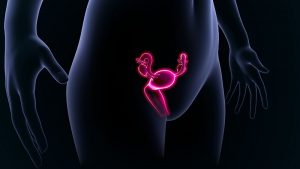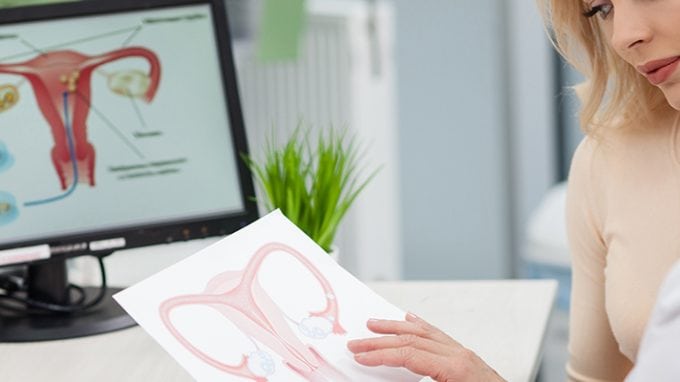It may sound odd, but a tilted uterus is a condition where the womb slants backwards instead of forwards. While some women may experience some discomfort during sex as a result, in most cases it can go unnoticed and generally does not impair pregnancy.
What Is a Tilted Uterus?
The womb is typically a pear-shaped organ that sits in the lower torso and curves slightly towards the belly button. It naturally rests on the bladder while the cervix at the neck of the womb points towards the vagina. In women with a tilted womb, however, the natural slant is displaced, and the womb leans back towards the rear. The cervix and lower parts of the womb may move slightly downward. Though this condition is most commonly called a tilted uterus, it is also referred to as a retroverted uterus, uterine retroversion, a retroflexed womb, or uterine retrodisplacement.
What Causes a Tipped Womb?
In many cases, there is no specific reason for this medical condition to occur. Many women are just born with a womb that is already in a tipped position. It is sometimes due to genetics, but it can even happen in families with no history of this condition. Some women are born with a tilted womb, but it can also be something that happens later in life. If the pelvic muscles are weakened, all of the supportive muscles and ligaments around the womb can become so weakened that the womb slides backwards. If the womb is enlarged due to tumors or pregnancy, it can also become too big to remain in the proper position. A tilted womb may also be caused by scar tissue that pushes the womb backwards.
What Are Symptoms of Uterine Retroversion?

- Painful sex may happen if the womb shifts so much that the cervix begins to sit lower. It is often alleviated by shifting to another position.
- During menstruation, the pain tends to worsen.
- Some women experience pain in the lower back.
- Urine may leak, especially during movements that require abdominal tension.
- Some women may find it difficult to use tampons.
- Urinary tract infections are more common among women with tilted wombs.
How Are Tipped Wombs Diagnosed?
If you have any symptoms of a tilted womb, it might be worth mentioning it to your doctor. Most cases are diagnosed during a routine pelvic exam when the doctor notices the unusual position of the womb. Most cases can be diagnosed with a basic physical exam, but a uterine retroversion can also be diagnosed with an imaging test. A scan like an ultrasound or an MRI will show the unusual womb position.
Can Uterine Retroversion Be Treated?
For milder cases, doctors may not recommend any sort of treatment. It is worth going through treatment, however, if you are dealing with any discomfort or inconvenience. Temporary relief from pelvic pain can be received by placing a silicone or plastic pessary into the vagina to prop up the womb and put it in the right position. Basic treatments may simply involve exercises that strengthen the pelvic floor and manipulate the womb back into the proper position. If these exercises prove unhelpful in the long run, surgery will be needed.
Will Having a Tilted Womb Affect Conception or Pregnancies?
Being diagnosed with a tipped womb might seem scary, but it does not necessarily affect a woman’s ability to conceive and carry a fetus to term. Women who have a tilted womb generally manage to get pregnant and have a healthy pregnancy without any issues. In the early weeks, they may have a little extra back pain and experience trouble urinating. Between the tenth and twelfth weeks of pregnancy, the womb will normally begin to naturally straighten and stand up. If it does not, there is a slightly higher chance of miscarriage. This is quite rare, however, because a tilted womb will normally shift to the proper position unless scar tissue is holding it in a tipped position. This is called incarceration of the womb and it may signify that you need additional treatment.




